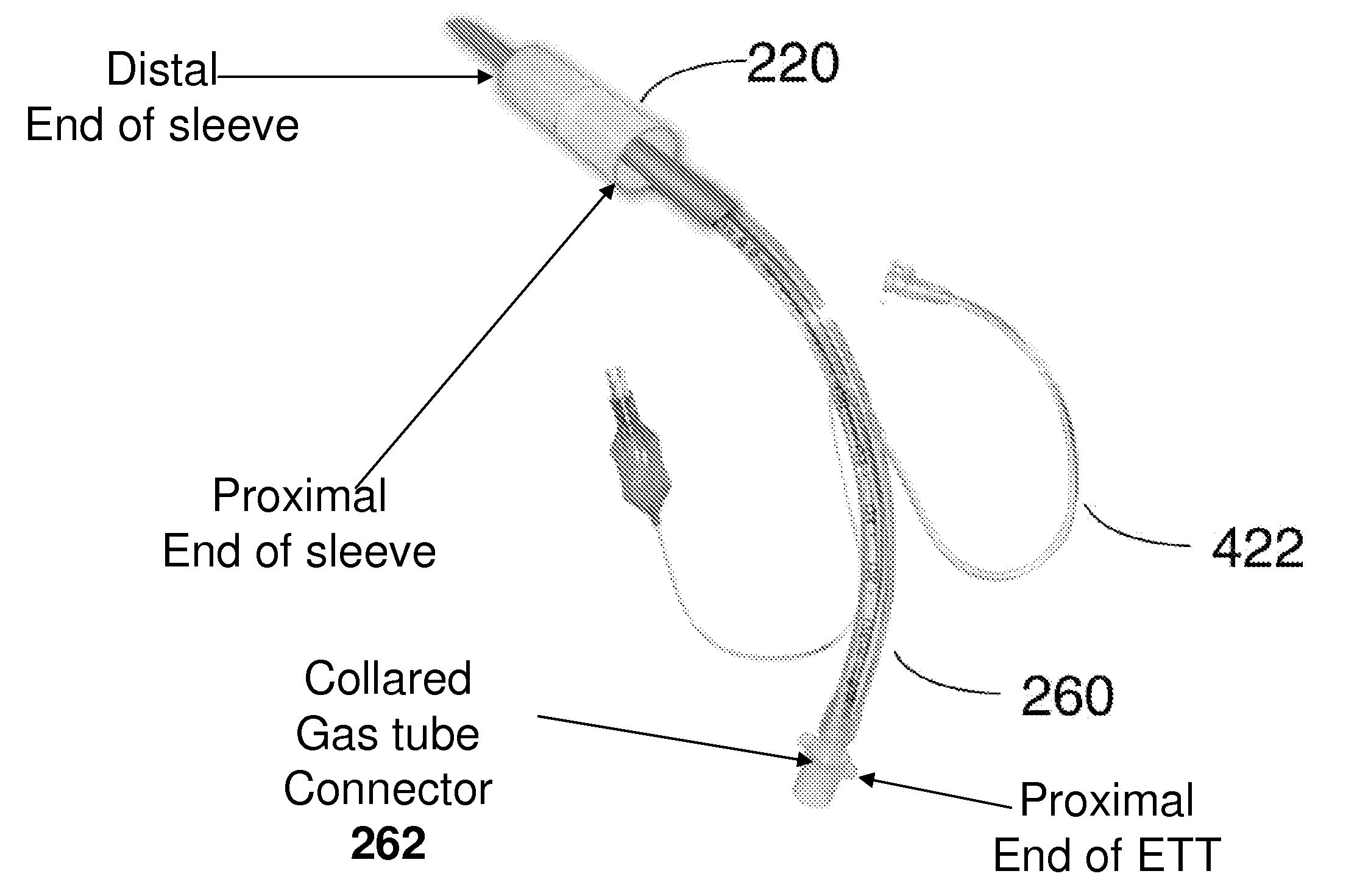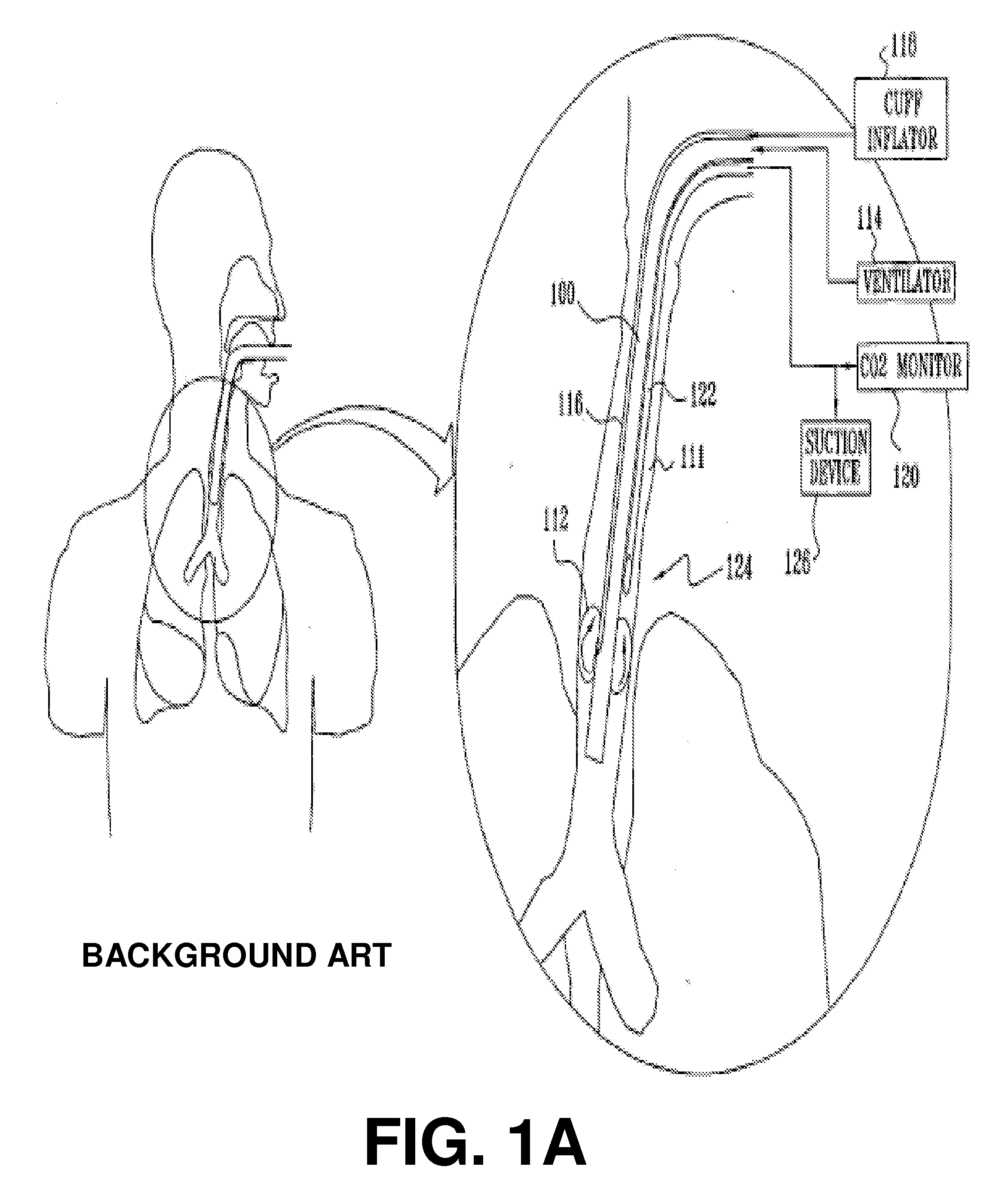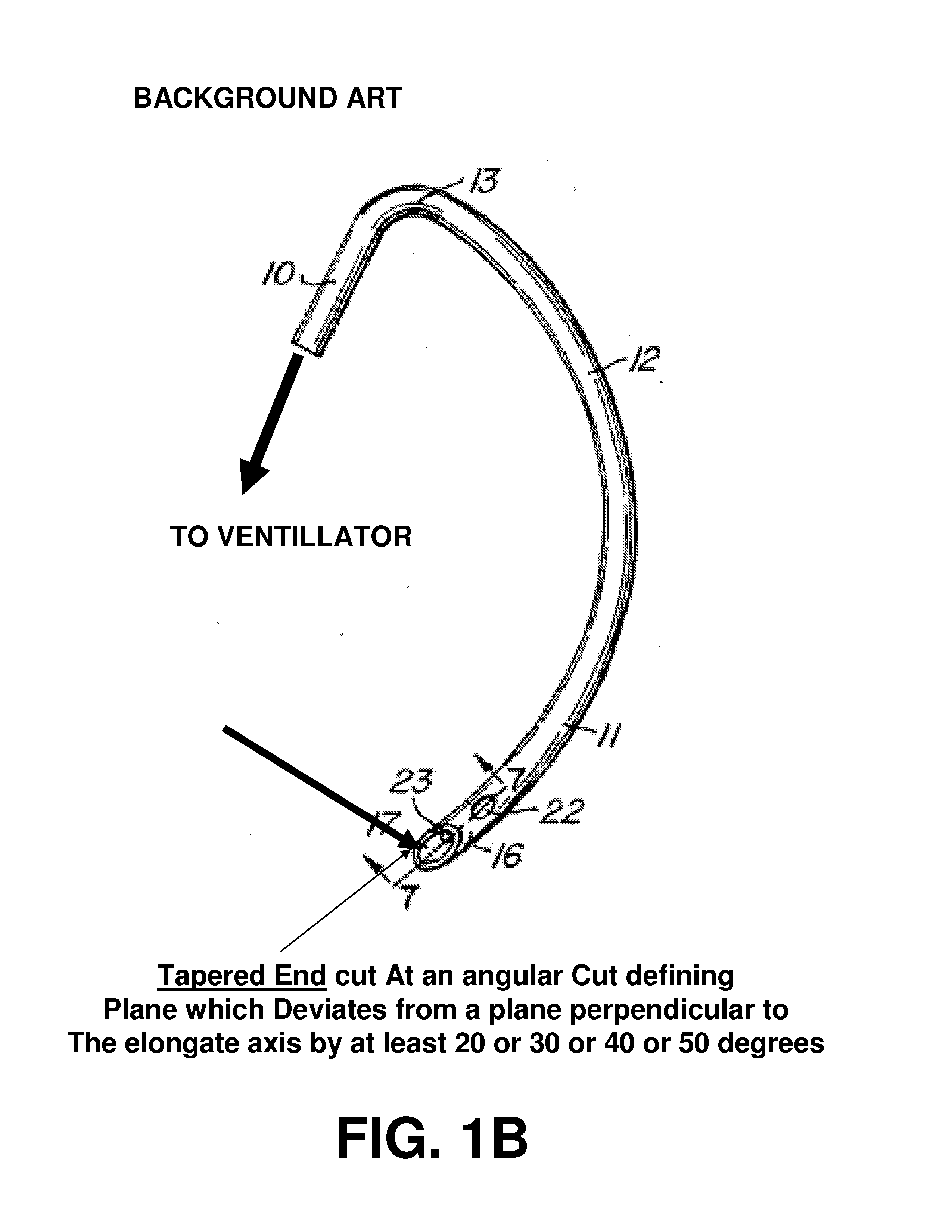Method and apparatus for blocking fluid flow in an intubated trachea
a technology of intubated trachea and fluid flow, which is applied in the direction of tracheal tubes, stents, respirators, etc., can solve the problems of insufficient suctioning of the pharynx, inability to ensure the complete removal of all secretions, and inability to implement sealing pressure in practice, so as to reduce the likelihood of fluid leakage
- Summary
- Abstract
- Description
- Claims
- Application Information
AI Technical Summary
Benefits of technology
Problems solved by technology
Method used
Image
Examples
Embodiment Construction
[0017]Embodiments of the present invention relate to an apparatus, method and kit for reducing a likelihood of fluids leaking from the trachea of a patient undergoing intubation into a lung thereof.
[0018]Some embodiments provide a cuff assembly and a related method for preventing and / or hindering a downward motion of fluids in the trachea during intubation. The cuff assembly includes an elastic, outwardly biased, liquid-impermeable elongated sleeve (preferably constructed from a fibrous skeleton coated with a biocompatible elastic material) which, when deployed within the trachea, outwardly presses against the wall of the trachea.
[0019]The cuff assembly further includes a liquid-impermeable connecting element that is permanently attached to an inner surface of the sleeve. When an ETT passes through an inner region of the elongated sleeve to longitudinally traverse the sleeve, the connecting element (for example, comprising one or more liquid-impermeable non-rigid membranes) is in co...
PUM
| Property | Measurement | Unit |
|---|---|---|
| length | aaaaa | aaaaa |
| length | aaaaa | aaaaa |
| length | aaaaa | aaaaa |
Abstract
Description
Claims
Application Information
 Login to View More
Login to View More - R&D
- Intellectual Property
- Life Sciences
- Materials
- Tech Scout
- Unparalleled Data Quality
- Higher Quality Content
- 60% Fewer Hallucinations
Browse by: Latest US Patents, China's latest patents, Technical Efficacy Thesaurus, Application Domain, Technology Topic, Popular Technical Reports.
© 2025 PatSnap. All rights reserved.Legal|Privacy policy|Modern Slavery Act Transparency Statement|Sitemap|About US| Contact US: help@patsnap.com



